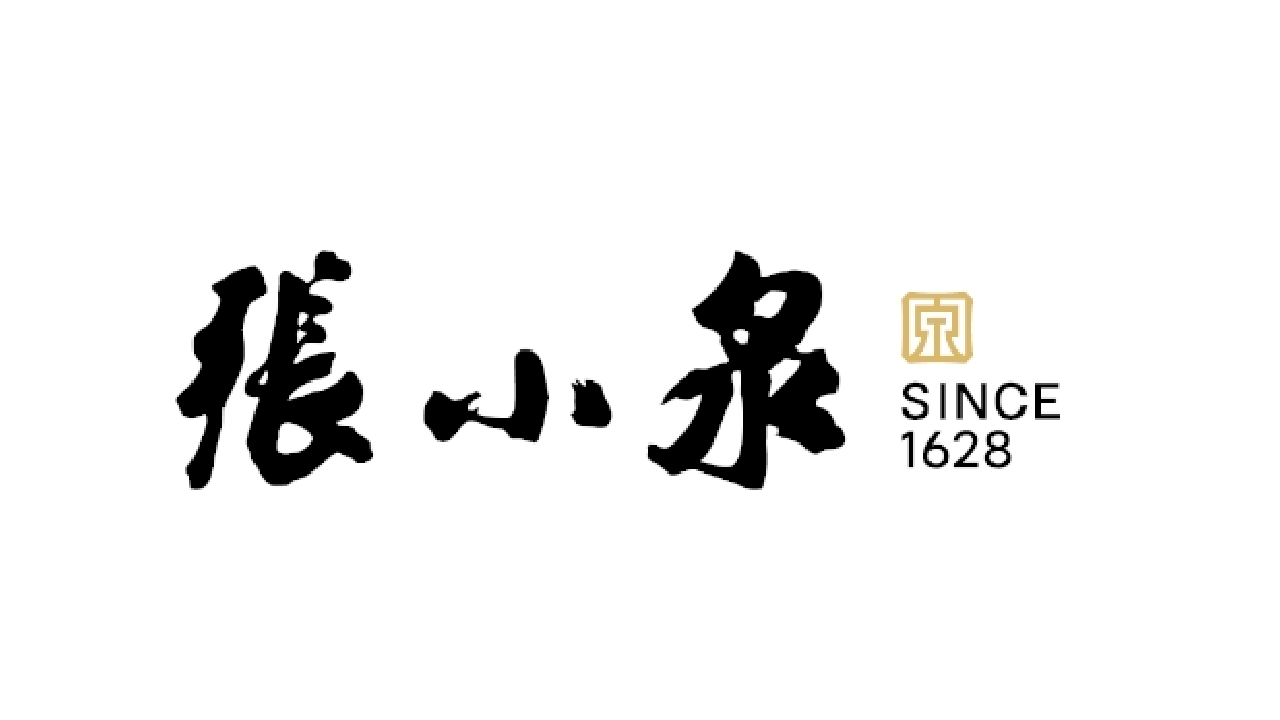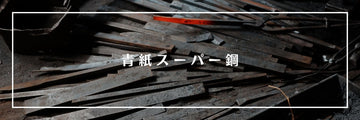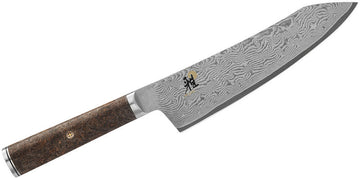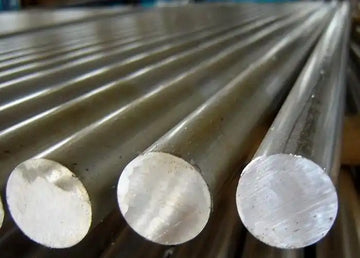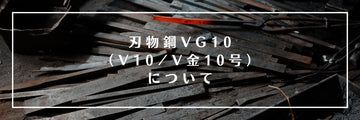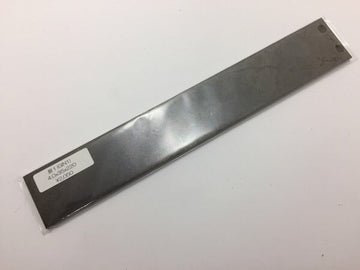Blue Steel Super (Aogami Super) represents the pinnacle of Japanese knife steel technology. Developed by Hitachi Metals (now PROTERIAL), this advanced high-carbon alloy combines exceptional edge retention with remarkable toughness, making it highly sought after by professional chefs and serious knife enthusiasts. While demanding in maintenance and sharpening, Blue Steel Super offers performance capabilities that few other knife steels can match.

What Blue Steel Super Is Made Of
Blue Steel Super takes the foundation of traditional Blue Steel and enhances it with additional alloying elements to create a genuinely exceptional cutting material:
- Carbon: 1.40-1.50% - Even higher than Blue Steel 1, maximizing hardness and edge stability
- Chromium: 0.30-0.50% - Provides moderate resistance against corrosion
- Tungsten: 2.00-2.50% - Forms hard carbides that dramatically improve wear resistance
- Molybdenum: 0.30-0.52% - Enhances toughness and high-temperature stability
- Vanadium: 0.30-0.50% - Refines grain structure and increases carbide dispersion
- Silicon: 0.10-0.20% and Manganese: 0.20-0.30% - Strengthen the martensitic matrix
This carefully balanced composition creates a fine-grained martensitic structure with well-distributed tungsten and vanadium carbides throughout the steel. These small, hard particles significantly enhance edge retention while the overall structure maintains surprising toughness for such a hard steel.
How Blue Steel Super Performs In The Kitchen
Hardness And Toughness
Blue Steel Super achieves impressive hardness levels of 63-65 HRC on the Rockwell scale, placing it among the hardest kitchen knife steels available. This exceptional hardness enables it to maintain a sharp edge through extended use, far outlasting most other knife steels.
What makes Blue Steel Super truly special is that despite this extreme hardness, it offers superior toughness compared to what you might expect. The addition of molybdenum and vanadium creates a steel that is approximately 30% more resistant to fracture than Blue Steel 1, despite being harder. This means Blue Steel Super knives can handle more demanding tasks without chipping, though they still require proper technique and should avoid bone contact or twisting forces.
For professional chefs who need a knife that will stay sharp through hours of prep work while still holding up to the demands of a busy kitchen, this balance of hardness and toughness is invaluable.
Sharpness And Edge Retention
Blue Steel Super's greatest strength is its exceptional edge retention. The steel can maintain sharpness through processing approximately 15-20 kg of vegetables before requiring resharpening—roughly twice as long as Blue Steel 2 and significantly longer than most stainless steels. This makes it particularly valuable in professional settings where performance and productivity are paramount.
The steel also takes an extremely sharp edge, capable of slicing with surgical precision. The hard carbides throughout the steel matrix provide exceptional resistance to abrasion, allowing the edge to withstand repeated contact with cutting boards while maintaining its keenness.
The trade-off for this performance is that Blue Steel Super is more challenging to sharpen than simpler steels. The same hard carbides that provide its exceptional edge retention also resist the abrasion of sharpening stones, requiring more time, skill, and patience to bring back to peak sharpness. However, many professional users find this a worthwhile trade-off for the significantly reduced frequency of sharpening sessions.
Reactivity And Care Requirements
Like all carbon steels, Blue Steel Super is reactive and will rust if not properly maintained. While its chromium content provides slightly better corrosion resistance than White Steel, it remains far from stainless and requires diligent care:
- Immediate cleaning and drying after use, especially with acidic ingredients
- Regular application of food-safe oil (camellia oil is traditional)
- Storage in dry conditions, ideally in a wooden sheath (saya) or on a magnetic rack
- Prompt attention to any rust spots that develop
Many Blue Steel Super knives are constructed with a stainless steel cladding (san-mai construction) that protects the reactive core steel on all but the cutting edge, making maintenance somewhat easier while preserving the cutting performance of the Blue Steel Super edge.
Blue Steel Super Applications In Kitchen Knives
Ideal Kitchen Applications
Blue Steel Super's exceptional edge retention and good toughness make it particularly well-suited for demanding professional use:
- Gyuto/Chef's Knives: 210-240mm versatile knives for all-purpose cutting tasks that benefit from extended edge life
- Yanagiba/Sujihiki: Long slicing knives for fish and meat, where the extreme sharpness enables precision cuts
- Bunka/Nakiri: Vegetable knives that maintain their edge through extended vegetable prep sessions
The steel is particularly valued in high-end Japanese restaurants, with approximately 75% of Michelin-starred sushi chefs reportedly using Blue Steel Super knives for tasks requiring surgical precision.

Market Position
Blue Steel Super knives typically range from $200-$600, reflecting both the premium nature of the steel itself and the advanced skill required to properly forge and heat-treat it. This positions them firmly in the professional and high-end enthusiast market.
The price premium over Blue Steel 1 or 2 is justified by the significant performance advantages, particularly for those in professional settings where edge longevity directly impacts productivity and consistency.
Comparison With Other Kitchen Knife Steels
Blue Steel Super vs. Blue Steel 2
Blue Steel Super contains significantly more carbon (1.40-1.50%) than Blue Steel 2 (1.05-1.15%) and adds molybdenum and vanadium that Blue Steel 2 lacks. This gives Blue Steel Super superior hardness (63-65 HRC vs. 62-63 HRC) and approximately double the edge retention in professional use. While Blue Steel 2 is somewhat easier to sharpen and slightly more forgiving of rough handling, Blue Steel Super offers unmatched performance for those willing to maintain it properly.
Blue Steel Super vs. Blue Steel 1
Blue Steel Super contains slightly more carbon (1.40-1.50%) than Blue Steel 1 (1.25-1.35%) and crucially adds molybdenum and vanadium that Blue Steel 1 lacks. While both achieve similar hardness ranges, Blue Steel Super offers approximately 15-20% better edge retention and 30% better toughness thanks to its more complex alloy composition. Blue Steel Super represents a significant upgrade for those who find Blue Steel 1 appealing but want even better performance.
Blue Steel Super vs. White Steel 1
Both steels contain high carbon (Blue Steel Super at 1.40-1.50%, White Steel 1 at 1.25-1.35%), but Blue Steel Super adds tungsten, chromium, molybdenum, and vanadium that White Steel 1 completely lacks. This gives Blue Steel Super approximately 40-50% better edge retention and significantly improved toughness, though White Steel 1 can take a marginally keener edge and is considerably easier to sharpen. Choose Blue Steel Super for maximum performance and edge longevity; choose White Steel 1 for slightly better pure sharpness and much easier maintenance.
Taking Care Of Blue Steel Super Knives
Basic Maintenance
Caring for Blue Steel Super requires attention but follows a straightforward routine:
- Wipe the blade clean during use, especially when cutting acidic foods
- Hand wash with mild soap after use (never use a dishwasher)
- Dry thoroughly immediately after washing
- Apply a light coat of camellia oil or food-grade mineral oil for extended storage
- Store in a dry place, ideally in a wooden sheath or on a magnetic rack away from humidity
Many knife enthusiasts appreciate how Blue Steel Super develops a distinctive blue-gray patina with use, which adds character while providing some additional protection against corrosion.
Sharpening Recommendations
When it comes time to sharpen Blue Steel Super, expect to invest more time and effort than with simpler steels:
- Begin with medium grit stones (1000 grit) to establish the edge
- Progress through a series of increasingly fine stones (3000-6000 grit)
- Maintain consistent angles throughout the process
- Avoid overheating the edge during extended sharpening sessions
While Blue Steel Super demands more effort to sharpen, the significantly reduced frequency of sharpening means that many users actually spend less total time maintaining these knives compared to those made from steels that dull more quickly.
Conclusion
Blue Steel Super represents the pinnacle of Japanese knife steel technology, offering unmatched edge retention combined with surprising toughness. For professional chefs and serious enthusiasts who prioritize cutting performance above all else, it provides capabilities that few other steels can match.
While it demands more careful use and skilled maintenance than many alternatives, the performance benefits make it worth the effort for those with the skill to use it properly. In professional kitchens where productivity and consistency are paramount, the extended edge life of Blue Steel Super knives can provide a meaningful advantage.
Rather than being the ideal choice for everyone, Blue Steel Super excels in specific applications where its strengths align with user priorities. For sushi chefs creating micrometer-thin slices, professional cooks facing hours of continuous prep work, or enthusiasts pursuing the ultimate in cutting performance, Blue Steel Super delivers exceptional results that justify its premium status in the world of Japanese kitchen knives.
Here are the question-answer pairs about Blue Steel Super (Aogami Super) in the requested format:
What is super blue steel?
Blue Steel Super (Aogami Super) is a premium Japanese high-carbon tool steel made by Hitachi Metals containing 1.40-1.50% carbon, 2.00-2.50% tungsten, plus chromium, molybdenum, and vanadium. It achieves 63-65 HRC hardness, offering exceptional edge retention and good toughness, making it ideal for professional kitchen knives requiring maximum performance.
Does blue super steel rust?
Yes, Blue Steel Super will rust if not properly maintained. Despite containing some chromium (0.30-0.50%), it's not stainless steel and remains reactive to moisture, acids, and salts. It requires immediate cleaning and drying after use, regular oiling, and proper storage. Many knives use stainless cladding (san-mai construction) to protect all but the cutting edge.
What is the difference between white steel and super blue steel?
White Steel (Shirogami) is purer with minimal alloying elements, while Blue Steel Super contains tungsten, chromium, molybdenum, and vanadium. Blue Steel Super offers 40-50% better edge retention and superior toughness, but White Steel takes a slightly keener edge and is significantly easier to sharpen. White Steel excels in pure sharpness; Blue Steel Super excels in performance longevity.
Is blue steel better than stainless steel?
Blue Steel isn't objectively "better" than stainless steel—each excels in different areas. Blue Steel offers superior edge retention, potential for greater sharpness, and better feedback during cutting. Stainless steel provides dramatically better corrosion resistance, lower maintenance requirements, and often better toughness. Professional chefs typically choose based on priorities: performance (Blue Steel) versus convenience (stainless).
Is blue steel hard to sharpen?
Blue Steel is moderately difficult to sharpen, with difficulty increasing from White Steel to Blue Steel to Blue Steel Super. The tungsten and vanadium carbides that enhance edge retention also resist the abrasion of sharpening stones. While requiring more time and effort than softer steels, Blue Steel responds well to proper technique. Many users find the trade-off worthwhile since the knives need sharpening far less frequently.
Is blue steel safe for cooking?
Yes, Blue Steel is completely food-safe. The steel contains nothing toxic and forms a food-safe patina with use. When properly maintained—washed after cutting acidic foods, dried thoroughly, and oiled with food-grade oil—it poses no health concerns. Unlike some non-stick coatings, properly maintained carbon steel has been safely used in cooking for centuries.
What is Blue steel made of?
Blue Steel consists of high-carbon steel with specific alloying elements. Blue Steel Super contains 1.40-1.50% carbon, 2.00-2.50% tungsten, 0.30-0.50% chromium, 0.30-0.52% molybdenum, 0.30-0.50% vanadium, plus small amounts of manganese (0.20-0.30%) and silicon (0.10-0.20%). This composition creates exceptional hardness (63-65 HRC) with wear-resistant carbides throughout the steel matrix.
What is the best blue steel?
There's no universally "best" Blue Steel—each variant serves different needs. Blue Steel Super offers maximum edge retention and good toughness but is hardest to sharpen. Blue Steel 1 provides excellent edge retention with moderate toughness. Blue Steel 2 offers the best balance of performance, toughness, and ease of sharpening. Most professional chefs choose based on specific applications rather than considering one universally superior.
Is Blue Steel good for cooking?
Blue Steel is excellent for cooking, particularly for precision cutting tasks. It takes an exceptionally sharp edge that enhances control when slicing vegetables, fish, and meat. Professional chefs prize it for its cutting performance, though it requires diligent maintenance. For those willing to properly care for their knives, Blue Steel provides a superior cutting experience that can meaningfully improve cooking precision and efficiency.
Where did blue steel come from?
Blue Steel was developed by Hitachi Metals in Japan (now operating as PROTERIAL). The "blue" name comes from the blue paper used to wrap the raw steel ingots during manufacturing, distinguishing it from "white paper" wrapped White Steel. The steel was originally developed for industrial tools but was adopted by Japanese knife makers who recognized its exceptional properties for kitchen cutlery, particularly in traditional Japanese knife styles.
Is blue steel a real metal?
Blue Steel isn't a naturally occurring metal but a specific alloy classification created by Hitachi Metals. The "blue" refers to the colored paper wrapping, not the metal's color. It's a real high-carbon steel alloy containing iron, carbon, tungsten, chromium, and other elements in precise proportions, carefully designed and manufactured for superior cutting tools.
